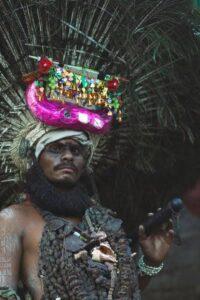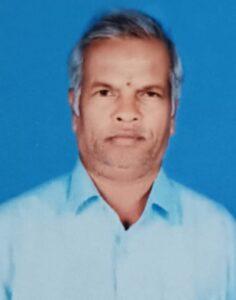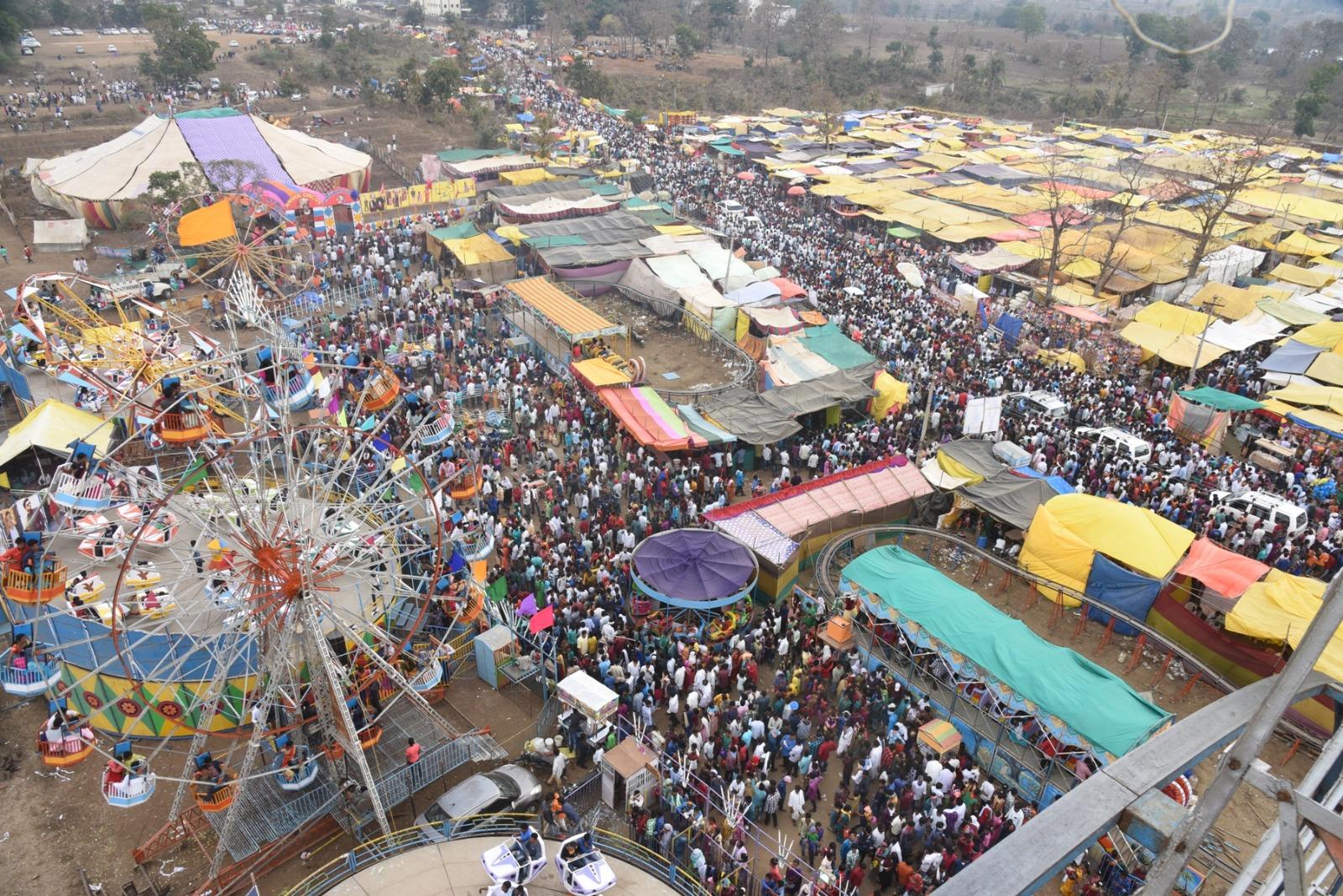210 Mesharam Gond men set out to bring Godavari water for Maha Pooja at Nagoba Temple – a tradition that is strictly followed till date
The water is used to cleanse the temple before the Jatara begins on February 9 at the Nagoba temple in Keslapur

Gonds is a unique culture with centuries old history. Under the main Gond religion there are around 50 castes. And, most of them participate in the Nagoba Jatara. It is a culmination of the rituals that begin days ahead when a two-member team including the Pradhan of Mesram clan visit Sirikonda to place an order for earthen pots to bring the water. Once the pots are brought back to Keslapur, the men of Mesram clan set out on foot to bring back water from Godavari River.
While all the Raj Gonds revere Nagoba and participate in the Nagoba Jathara, it is the Pradhan priest of Mesram clan who does the pooja during the Jathara. The pooja ritual happens in the Pushya Masam (month) on the new moon day (Amavasya). But before that the Mesram clan males along with a bullock cart (prachara radham) set out on foot to bring Godavari water. It is a sight to behold as hundreds of them wearing white clothes walk in a line through the forests and villages to reach the Hastinamadugu in Jonnaramula Mandalam, Machirial district.


Manohar Utnoor
Pradhan Manohar Utnoor shares the details of Nagoba Jathara this year. “210 of us set out on this journey this year to get the Godavari water from Hastinamadugu. It all starts when the moon is spotted. We order earthen pots from the potters of the Guggilla community of Sirikonda. Pradhan along with the Prachara Ratham also visits 7 other villages to inform people that the moon is spotted and it is time for the festivities – ‘Nelavanka kanipinchindi pushya masam pedha devuni uthsavalu unnayi’. The potters of Sirikonda who make the pots too follow a rigorous one month regimen of strict rules as they make the Kalasam, which is brought back to Keslapur when the men set out to get the water.

Thus begins the journey to bring the holy water. For seven days the men travel through the villages and reach the water, offer pooja and naivedyam (offering to the God) and bring back the water. There are quite a few other rituals before the water reaches Nagoba. Like telling the story of Gonds and Nagoba near the banyan trees, offering special pooja to the deceased elders, before cleansing the temple with the water from Godavari.”

For Mesram clan families it is an important festival and more – it is a family affair. Several customs and traditions are associated with the Jathara – like offering prayers to Persa Pen – their chief God, sons-in-law taking part in special rituals, the new daughters-in-law being introduced to the clan, before the main – Maha puja commences on the Amavasya day.

There is also special Durbar – a tradition that began from the Nizam time to collect the concerns of the people to be forwarded to the authorities- of which there is also a reference in the book by Christoph von Fürer-Haimendorf, an Austrian anthropologist – Andhra Pradesh Gond Tribe – Tradition & Change in an Indian Tribe.
It is not just the durbar but also various unique age-old traditions like some of the ones mentioned above that are being followed for centuries making Nagoba – a part of invaluable Indian heritage and tribal history. This year Nagoba Jathara is from February 9th to 16th.

















Pingback : Nagoba Jatara 2024 - Gallery | FridayWall